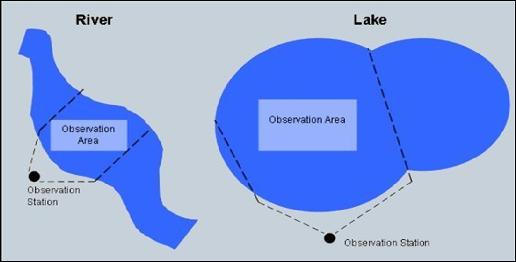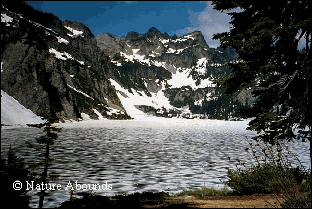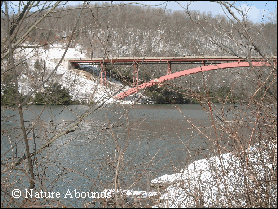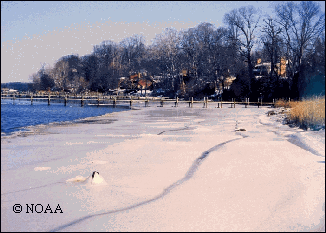
IceWatching Tips
| IceWatch USA | Become an IceWatcher | Why IceWatch? | Getting Started |
| IceWatch FAQ | IceWatching Tips | Volunteer Application |
Remember IceWatch observing should be completed from a distance. Do not walk onto a freezing body of water or to the direct edge of a shoreline. Observations should be done from a spot where your feet are firmly on the ground! For example:
- Recording the freeze and thaw dates for an entire body of water. Watch a pond in your local park, the irrigation pond in your field or the lake outside your home or apartment.
- Looking at one small section of a larger body of water. Pick one section of a river, or an inlet or small cove that is attached to the larger lake. A small bridge makes an excellent observation place, but also be prepared for snow or ice on the bridge.
- Creating an imaginary line that goes across a body of water.
Examples for Identifying Ice
Example of Observation Points and Viewing Areas
(Illustration used with permission from IceWatch Canada)

- Ice-on: 100% - Ice completely covers the lake, bay or river. See left photo below of an ice covered (Ice-on) lake in Washington State.
- Ice-off: 0% - Ice goes out or completely disappears from the lake, bay or river. See right photo below of an "Ice-off" phase on the Clarion River in Pennsylvania.


- Partial Ice Coverage: 1% - 99% - Waterbody has some ice coverage but also open water sections. See photo below of Patuxent River in Maryland.
